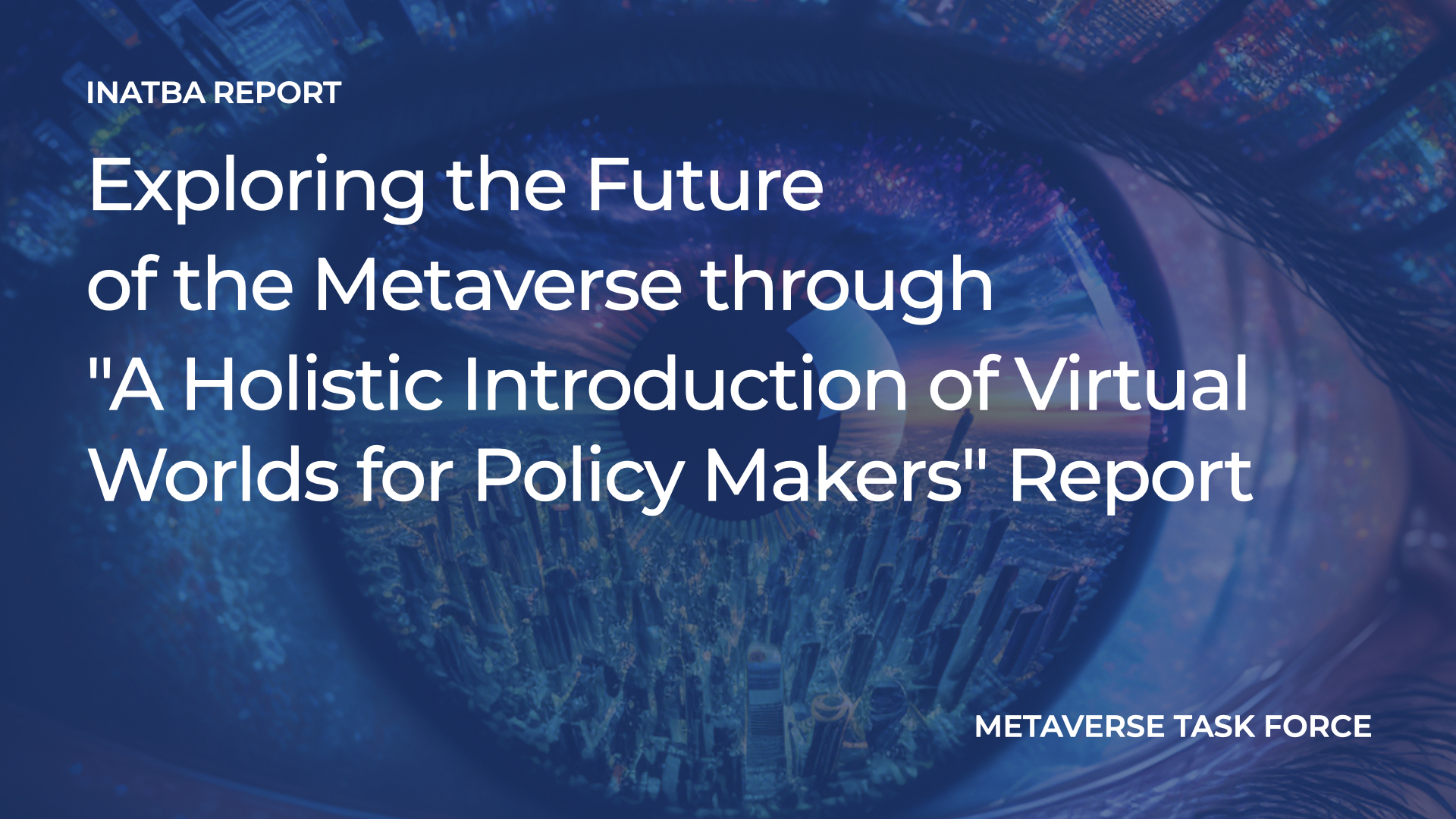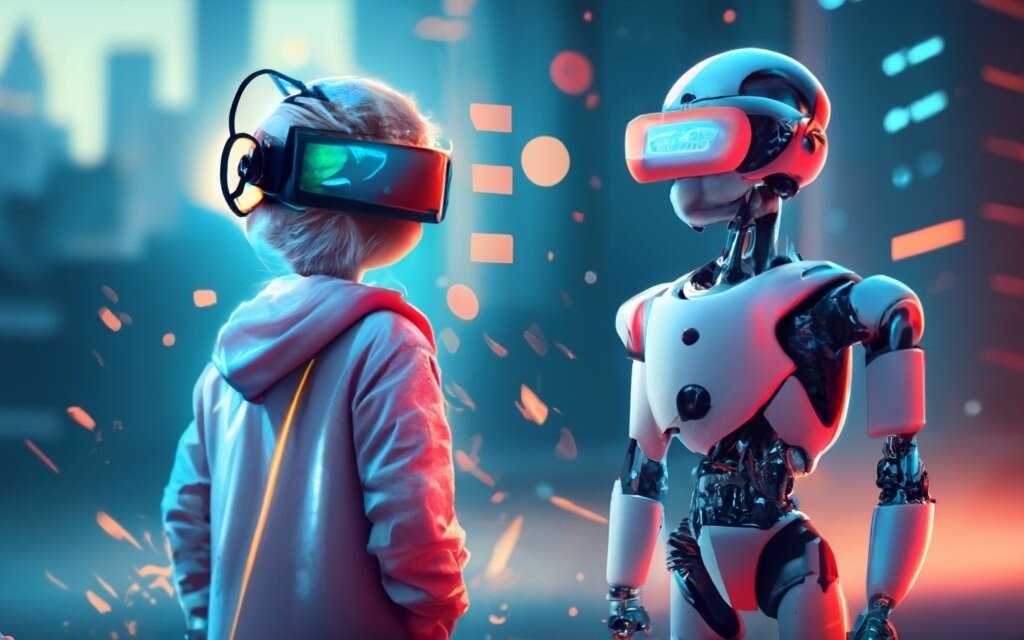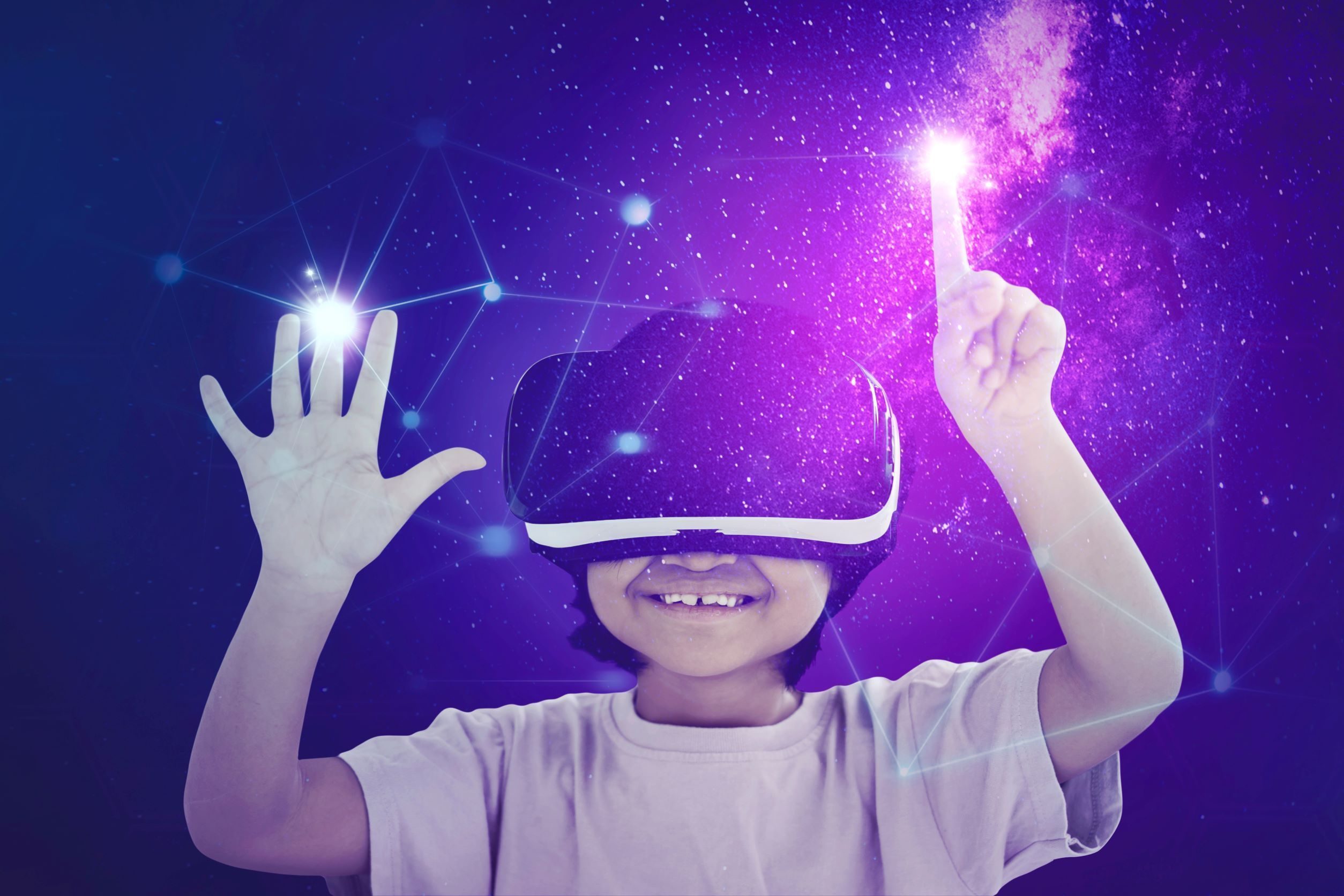As IT professionals, you stand at the forefront of revolutionary change, where the digital realm and our physical lives increasingly intertwine. In this blog post, What is the Metaverse? An Introduction to the Digital World of the Future, we will demystify the concept of the Metaverse. With an engaging overview, we’ll explore its historical context and the key technologies driving this virtual landscape. Additionally, you’ll discover the vast applications of the Metaverse across various industries, as well as how you can contribute to shaping this digital frontier. By examining future trends and addressing the challenges ahead, this introduction to the Metaverse aims to equip you with insights that will be invaluable in your professional journey. Get ready to dive into a transformative exploration of the digital world future trends that await!
Defining the Metaverse: A Comprehensive Overview
The Metaverse, often described as the next iteration of the internet, serves as a decentralized, immersive digital universe where users can interact, socialize, and conduct business. To fully grasp What is the Metaverse? An Introduction to the Digital World of the Future, it's essential to look at its key attributes and components.
Key Components of the Metaverse
| Component | Description |
|---|---|
| Virtual Reality | Environments that immerse users through VR headsets. |
| Augmented Reality | Digital overlays that enhance the physical world. |
| Blockchain | Ensures ownership and transactions with digital assets. |
| Artificial Intelligence | Powers realistic social interactions and NPCs. |
| 3D Environments | Creates spaces that users can navigate and modify. |
Fundamental Characteristics
- Interoperability: Users can move seamlessly between various Metaverse platforms using avatars and digital assets.
- Persistence: The digital landscape continues to exist and evolve, even when users are not logged in.
- User-Generated Content: Individuals can create, modify, and monetize their own environments and assets, fostering innovation.
Understanding these foundational elements helps to clarify Metaverse explained and the vast scope of its applications. In essence, the Metaverse represents a convergence of technologies that not only changes how we interact online but reshapes our social and economic landscapes.
Future Outlook
As we delve into this digital realm, it’s crucial for IT professionals, including software developers and cybersecurity experts, to consider how these technologies will interweave. This foundational understanding is vital for shaping and navigating digital world future trends effectively.

Historical Context: How the Metaverse Evolved
The concept of the Metaverse is not a sudden emergence; rather, it has gradually evolved over decades, influenced by technological advancements and shifts in user behavior. Understanding this evolution helps illuminate its current state and future potential. Here's a concise timeline to illustrate the key milestones in the development of the Metaverse:
| Year | Milestone | Description |
|---|---|---|
| 1987 | The Term 'Virtual Reality' Coined | Jaron Lanier introduces VR concepts, sparking interest. |
| 1992 | Snow Crash Released | Neal Stephenson’s novel popularizes the term "Metaverse." |
| 2003 | Second Life Launched | Early example of a user-generated 3D virtual world. |
| 2010s | Rise of Social Media and Gaming | Platforms like Facebook and Fortnite create social interaction. |
| 2020 | Increased Focus on Virtual Experiences | COVID-19 accelerates demand for digital connectivity. |
| 2023 | Mainstream Adoption of VR/AR | Technologies become more accessible, paving the way for the Metaverse. |
Key Influences:
- Literature & Film: Early depictions in sci-fi media laid the groundwork for the imaginative possibilities of immersive digital experiences.
- Technological Advances: The growth of computing power, graphics rendering, and networking has made complex virtual environments feasible.
- Community Creation: The evolution of online communities, especially in gaming and social media, has driven user engagement and collective experiences.
In summary, the Historical Context: How the Metaverse Evolved illustrates a rich tapestry of influences that have shaped this digital realm. By exploring how these various threads interconnect, IT professionals can better appreciate the complexities and possibilities within the Metaverse explained. Understanding these historical trends is vital as you prepare to engage with future trends in the digital world that beckon just around the corner.
Key Technologies Enabling the Metaverse
The Metaverse explained as a digital universe relies on a myriad of cutting-edge technologies that empower its vast landscape. Understanding these key components is essential for IT professionals aiming to harness the potential of this digital realm.
Essential Technologies driving the Metaverse
Virtual Reality (VR) and Augmented Reality (AR)
- VR immerses users in a fully virtual environment, while AR overlays digital information onto the real world.
- Both technologies provide an engaging experience, allowing users to interact with digital entities seamlessly.
Blockchain Technology
- Ensures secure transactions and ownership in the digital environment. It handles digital assets, such as NFTs (Non-Fungible Tokens), crucial for ownership verification.
- Facilitates decentralized applications, reducing reliance on traditional intermediaries.
Artificial Intelligence (AI)
- Powers intelligent content generation, enhancing user interactions through chatbots, virtual assistants, and realistic NPCs (non-player characters).
- AI also aids in data analysis and personalization, improving user experience.
5G Connectivity
- Establishes a high-speed, low-latency network essential for real-time interactions within the Metaverse.
- Facilitates seamless streaming of high-definition content, making multi-user environments more fluid.
Cloud Computing
- Provides the infrastructure to host vast amounts of data and applications accessible anytime and anywhere.
- Supports scalable environments, enabling developers to innovate without the constraints of on-premises hardware.
Comparison of Key Technologies
| Technology | Description | Role in Metaverse |
|---|---|---|
| VR & AR | Immersive environments | Enhances user experience |
| Blockchain | Secure transactions & digital ownership | Facilitates decentralized governance |
| AI | Intelligent automation & user interaction | Personalizes experiences |
| 5G | High-speed connectivity | Supports real-time interactions |
| Cloud Computing | Scalable data hosting | Enables global accessibility |
These technologies collectively shape what the Introduction to the Metaverse signifies, fostering a rich and interactive digital landscape. As IT professionals delve into the digital world future trends, they must stay adept with these evolving technologies to innovate effectively within this expansive universe.
Applications of the Metaverse in Various Industries
As we dive deeper into the "What is the Metaverse? An Introduction to the Digital World of the Future," it's essential to explore the diverse applications that this digital realm presents. The Metaverse explained offers a plethora of opportunities across several industries, transforming how they operate and engage with their audiences. Here are some key applications segmented by industry:
| Industry | Applications |
|---|---|
| Gaming | Immersive environments and experiences that allow for greater interaction between players. Virtual economies with real-world implications. |
| Healthcare | Telemedicine through virtual consultations, training simulations for professionals, and mental health therapy in comforting environments. |
| Education | Virtual classrooms enabling global learning, immersive simulations for hands-on experiences, and unique learning tools like gamification. |
| Retail | Virtual showrooms and fitting rooms, enhancing shopping experiences through AR/VR integration, and personalized marketing strategies. |
| Real Estate | Virtual property tours, AR for property visualization, and innovative sales processes through digital avatars. |
| Entertainment | Live events, concerts, and gaming tournaments within immersive environments, providing fans unprecedented engagement opportunities. |
Key Benefits:
- Enhanced Engagement: The Metaverse allows for rich and interactive experiences tailored to user interests.
- Global Reach: Businesses can connect with a worldwide audience, transcending geographical limitations.
- Cost Efficiency: Reducing operational costs through virtual infrastructures, such as remote training and telecommuting.
In summary, the Metaverse represents a paradigm shift for many sectors, enabling innovative approaches and enhancing user interaction. As digital world future trends continue to unfold, IT professionals must be ready to embrace these changes and collaborate in shaping the future landscape.

The Role of IT Professionals in Shaping the Metaverse
As we delve into What is the Metaverse? An Introduction to the Digital World of the Future, IT professionals play a crucial role in its development and implementation. Their expertise helps bridge the gap between innovative concepts and practical applications. In this evolving landscape, here’s how IT experts contribute:
- Developing the Infrastructure: IT professionals are responsible for building the foundational technologies that support the Metaverse, including advanced servers, cloud computing, and networking.
- Creating Content: Software developers generate immersive environments and experiences, utilizing virtual reality (VR) and augmented reality (AR) technologies to craft engaging content.
- Ensuring Security: Cybersecurity experts implement robust security measures to protect personal data and maintain privacy in digital spaces, addressing the potential vulnerabilities that the Metaverse presents.
- Engaging in Cross-Disciplinary Collaboration: IT professionals collaborate with game designers, artists, and marketers to create compelling experiences that resonate with users, making the Metaverse more appealing.
Key Contributions of IT Professionals
| Role | Contribution |
|---|---|
| Software Developers | Designing and developing immersive applications and platforms. |
| Network Engineers | Establishing reliable and high-speed internet connections. |
| Cybersecurity Experts | Ensuring user safety and data protection. |
| Data Analysts | Analyzing user interactions to improve experiences. |
In conclusion, as we navigate the digital world future trends, the involvement of IT professionals becomes increasingly vital. Their skills not only foster technological advancements but also ensure that the Metaverse is a safe, engaging, and innovative space for users worldwide. Thus, understanding the Metaverse explained becomes necessary for IT professionals to fully harness its potential and contribute to its evolution effectively.
Future Trends: What Lies Ahead for the Digital World
The Metaverse explained offers a glimpse into an expansive future where the lines between the physical and digital worlds become increasingly intertwined. As we anticipate what lies ahead, several emergent trends will shape this digital universe:
Key Trends to Watch
Interoperability: A crucial aspect of the evolving Metaverse is the ability to cross seamlessly between different virtual environments. This compatibility will enable users to maintain their identities and assets, creating a more cohesive digital experience.
Decentralization: Blockchain technology will play a pivotal role in promoting decentralized ownership and control within the Metaverse. Users will have more authority over their data, enhancing privacy and security.
Enhanced Virtual Experiences: With advancements in augmented reality (AR) and virtual reality (VR), users can expect more immersive and interactive experiences. This evolution will significantly impact gaming, education, and remote work.
AI Integration: Artificial Intelligence (AI) will enhance content creation and personalization within the Metaverse. Smart agents and avatars will offer tailored experiences, making interactions within this digital realm more engaging.
Potential Industry Impacts
| Industry | Anticipated Changes |
|---|---|
| Gaming | Increased realism and interactivity |
| Education | Virtual classrooms and simulations |
| Retail | Virtual shopping experiences |
| Real Estate | Virtual property tours and transactions |
As we consider digital world future trends, it's evident that the Metaverse will not only transform how we interact but also redefine existing industries. IT professionals, from software developers to cybersecurity experts, will play a critical role in integrating these technologies, ensuring safe and effective environments in this expanding digital landscape.
In summary, staying informed about these trends will be crucial for professionals looking to navigate and innovate within the Introduction to the Metaverse. The future promises exciting developments that will require agile and skilled IT minds to harness the possibilities of this digital frontier.
Challenges and Considerations in the Metaverse Realm
As What is the Metaverse? An Introduction to the Digital World of the Future unfolds, IT professionals must navigate a range of challenges and considerations that accompany this innovative landscape. While the Metaverse promises immersive experiences and unprecedented connectivity, several key challenges must be addressed to ensure a secure and viable digital environment.
Key Challenges
- Scalability Issues: As user interaction increases, platforms may struggle to accommodate heavy traffic, requiring robust infrastructure.
- Data Privacy and Security: Protecting user information is paramount. The Metaverse poses unique cybersecurity threats that demand sophisticated encryption and protection measures.
- Interoperability: Different virtual worlds should seamlessly connect. Achieving standardization across various platforms is essential for providing a unified experience.
- Digital Divide: Access to the Metaverse is not universal. Addressing the inequality in technology access can determine who can participate in this new realm.
- Ethical Considerations: As virtual realities expand, issues like digital identity, consent, and governance will govern the interactions within the Metaverse.
Considerations for IT Professionals
- Skill Development: IT specialists must continuously adapt to emerging technologies that enable the Metaverse, such as virtual reality (VR), augmented reality (AR), and blockchain.
- Policy Formulation: Professionals should contribute to the creation of policies that govern usage, ethical frameworks, and data management in this new space.
- Robust Architecture: Designing systems with scalability and security in mind is crucial for supporting the vast networks required by the Metaverse.
| Challenge | Consideration |
|---|---|
| Scalability Issues | Robust infrastructure design |
| Data Privacy and Security | Advanced encryption methods |
| Interoperability | Development of industry standards |
| Digital Divide | Focus on equitable access initiatives |
| Ethical Considerations | Establishment of governance frameworks |
In summary, as we dive deeper into the Metaverse explained, understanding and proactively addressing these challenges will enable IT professionals to shape a more inclusive and secure digital landscape for future trends.

Frequently Asked Questions
What exactly is the Metaverse?
The Metaverse is a collective virtual shared space, created by the convergence of virtually enhanced physical reality and physically persistent virtual reality. It includes a vast interconnected network of 3D virtual worlds and simulations, where users can interact with each other and the environment in real-time. In essence, it represents the next iteration of the internet, blending augmented reality (AR), virtual reality (VR), and the digital economy, allowing users to work, play, socialize, and conduct business in immersive experiences.
How do users access the Metaverse?
Users can access the Metaverse through various devices such as VR headsets, AR glasses, computers, and even mobile phones. These devices allow individuals to experience the Metaverse either through immersive environments or by engaging with digital content directly in their physical surroundings. The range of access methods reflects the Metaverse’s versatility, enabling users to choose how they want to interact with this expansive digital universe depending on their preferred technology and experience level.
What are the potential applications of the Metaverse?
The Metaverse has a multitude of potential applications across various sectors. In entertainment and gaming, it offers immersive gaming experiences and virtual concerts. In education, it provides interactive learning environments through simulations. Businesses can utilize the Metaverse for virtual offices and meetings, enhancing remote collaboration. Furthermore, it can serve as a platform for social interactions and networking, enabling users to connect in shared digital spaces. As technology evolves, the Metaverse is expected to expand its applications even further.
What challenges does the Metaverse face?
Despite its promise, the Metaverse faces several challenges, including issues related to privacy and security, regulatory considerations, and the need for standardized protocols for interoperability. Additionally, the digital divide presents disparities in access, limiting participation for some communities. There are also concerns surrounding user safety and mental health in immersive environments. Tackling these challenges will be crucial for the Metaverse to evolve into a safe, inclusive, and sustainable digital world for all users.
Leave a comment
Your email address will not be published. Required fields are marked *


.png)
.png)